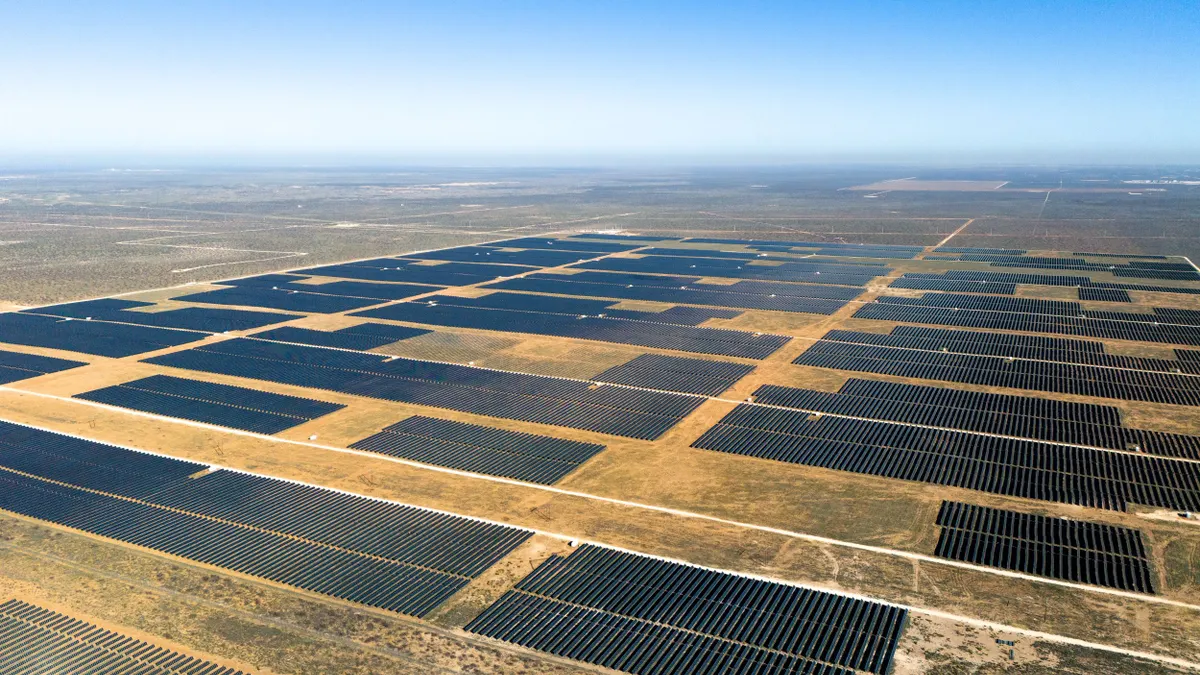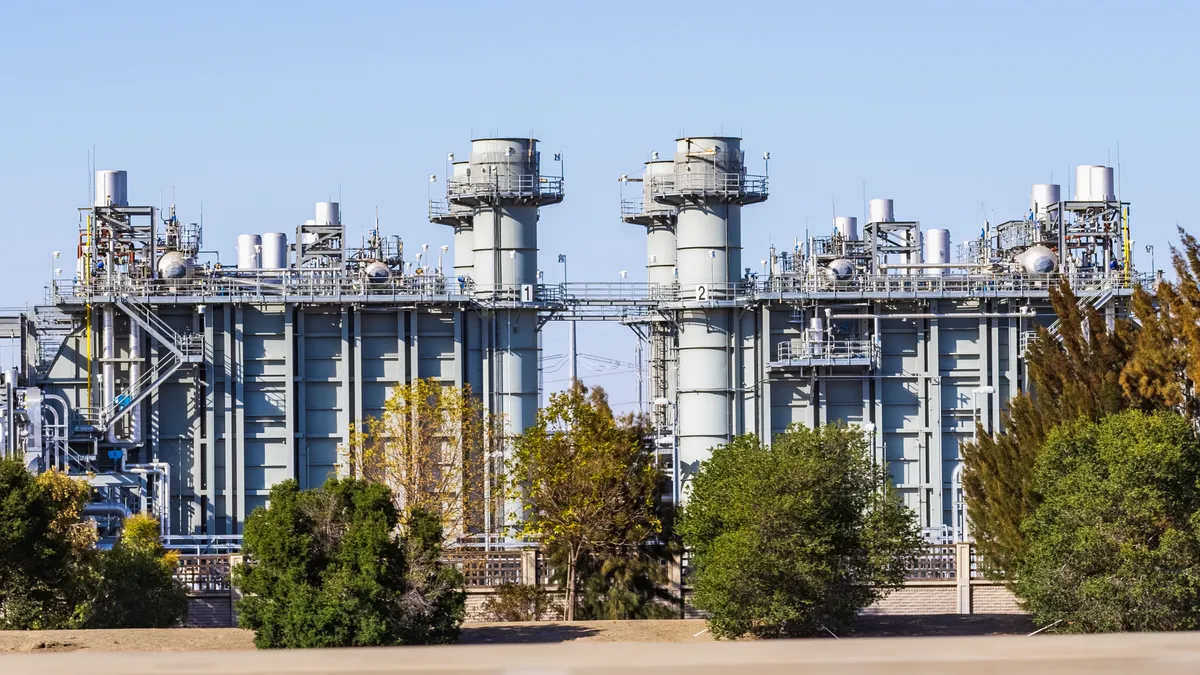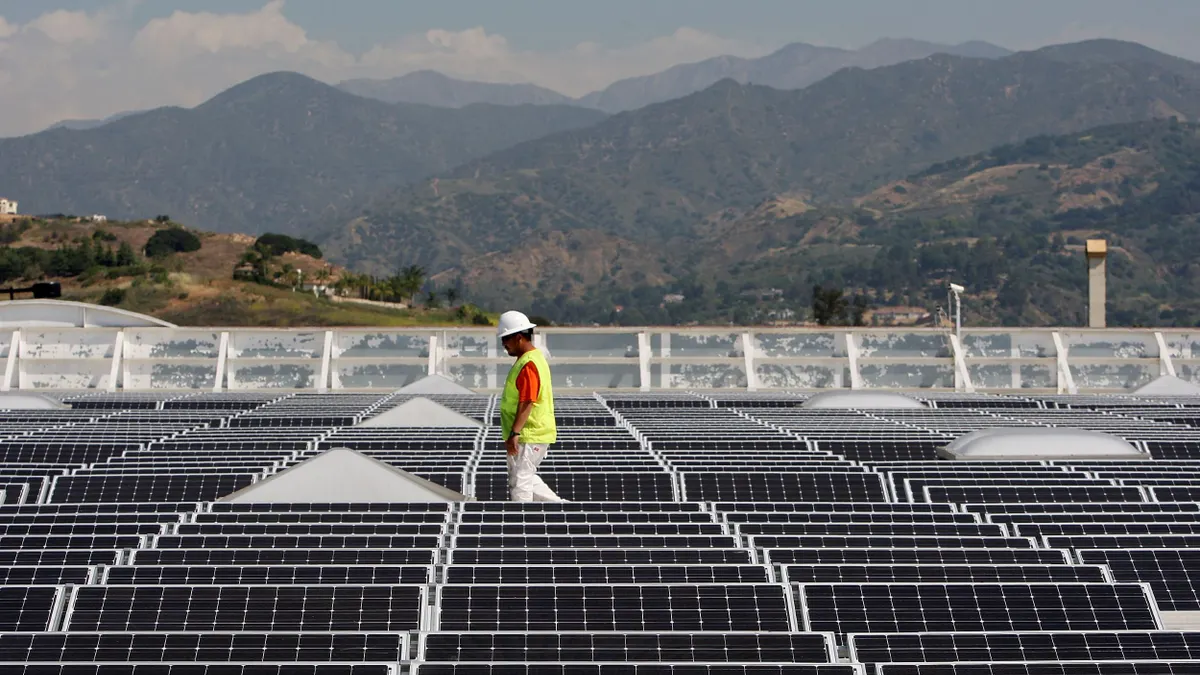The following is a contributed article from Dan Bakal, senior director of electric power at Ceres.
A series of critical developments in the climate and energy space have converged to alter the field of play for power companies — making it an important moment to take stock of power sector progress on climate action.
With renewable energy out-competing coal and other sources of electric power, climate change alarm bells blaring, a broad swath of new company commitments to reduce greenhouse gas (GHG) emissions, and increasingly engaged investors, we're seeing an entire sector of the economy transform.
While the sector's overall emissions increased slightly in 2018, largely due to increases in natural gas generation, electric power has otherwise led other sectors in reducing CO2 emissions in the U.S. over the past decade, according to the 2019 Sustainable Energy in America Factbook.
Meanwhile, over the past year, many of the largest power companies and biggest CO2 emitters in the sector have issued more robust climate risk reports and made deeper commitments to medium- and long-range GHG reductions.
These announcements have come at a crucial time, with the recent release of the Special Report on Global Warming of 1.5°C by the Intergovernmental Panel on Climate Change (IPCC) highlighting the critical need for the power sector to achieve net zero emissions before 2050 and to supply clean energy to support a broader range of uses in order to avoid the worst impacts of climate change.
The IPCC report highlights the significantly increased climate-related impacts expected under a 2°C warming scenario compared to 1.5°C, a difference that could prove existential for entire countries — not to mention devastating for the global economy.
One doesn't have to look into the future to see such climate-related economic disasters. Right now, the power sector is reeling from the fallout from PG&E's massive bankruptcy, referred to by the Wall Street Journal as the first climate change-related bankruptcy.
Against this backdrop, it is encouraging that there has been a surge of companies releasing climate disclosures and setting meaningful GHG reduction goals, such as science-based targets. These commitments have been enabled by factors including:
-
Decreasing costs for renewable energy, which gives company executives more confidence in their ability to sustain emission reductions;
-
Increasing pressure from investors, via initiatives such as Climate Action 100+, which urges companies to address climate risks and opportunities associated with climate solutions;
- Customer demand for clean energy, especially from large corporate customers seeking to procure 100% renewable energy through initiatives like RE100;
- Cities and states increasing their ambitions and setting goals for clean energy and carbon reductions; and
-
The vacuum in leadership at the federal level, which makes it more essential for companies to fill the void.
Many U.S. power companies have also undertaken climate scenario analyses. Companies issuing reports based on such analyses include AES, PPL, Duke Energy, Southern Company, Dominion Energy and CMS Energy.
Among these published analyses, one of the strongest examples of climate leadership emerges in the report from the Virginia-headquartered AES.
The company's climate scenario report is well aligned with the recommendations of the Task-force for Climate-related Financial Disclosures (TCFD) — a group that has created comparable and consistent disclosure standards that companies can use to show climate resilience to their investors — and utilizes three climate scenarios, including a "well-below 2-Degree Celsius" scenario.
AES details its new focus on four primary "Clean Energy Growth Platforms." These platforms, which are intended to move the company toward decarbonization, are:
-
Continued growth of renewables such as wind and solar.
-
Exchanging less carbon-intensive Liquified Natural Gas (LNG) for oil-fired & diesel assets.
-
Deployment of energy storage to build grid reliability and flexibility.
-
Investment and promotion of energy efficiency.
AES also outlines a shift in investment away from coal and toward renewable energy assets, with its CEO emphasizing that "We are even more pleased to see that the results show our actions make us a more resilient company across various climate scenarios."
Importantly, in light of the ever-more-favorable economics of renewable energy, it is reasonable to anticipate that the company's planned reliance on LNG will be less than what the company envisioned in its report.
Meanwhile, late last year, Xcel Energy disclosed its long-range GHG reduction plans, announcing a bold new commitment to provide 100% carbon-free electricity to its customers by 2050 and achieve an 80% reduction by 2030. Xcel thus became the first major U.S.-based power company to commit to carbon-free electricity across its entire service territory and raised the bar for climate ambition across the sector.
Investors driving action
These disclosures and commitments are often in response to investors' explicit requests. As Mark Carney, the Governor of the Bank of England recently explained, financial firms with nearly $110 trillion in assets under management now support the standards put forth by the TCFD and "...there has been a step change in the demand and supply of climate reporting."
One key aspect of all this transformation is the role that shareholders have played to encourage action.
Investors are increasingly focused on the material financial implications of climate change and recognize that if companies make investments that are not prudent over a long time horizon, the risk of stranded assets and potential write-downs increases.
As AEP Executive Vice President and Chief Financial Officer Brian X. Tierney aptly noted, "As the demand for climate-related disclosure continues to grow among investors, so does the need to provide accurate and consistent data that is relevant for AEP and our industry."
While we have witnessed demonstrable progress, and recent U.S. power company commitments are encouraging, the sector still has a long way to go.
Many companies have neither set goals nor shown the necessary level of ambition. This coming year will require a continued ratcheting-up of commitments, and will challenge companies in the sector to display increased ambition and a commitment to finding innovative ways to lead on climate.
They will be nudged along by Ceres' Commit to Climate initiative, as well as by voices like the Climate Majority Project — who recently launched an investor-led "Net-Zero by 2050" effort urging other power companies to follow Xcel's lead.
Investors will pay close attention to this year's Annual General Meeting season, looking for indications of improved clean energy transition planning, enhanced climate scenario analyses and accountability around achieving these goals — such as via executive compensation plans tied to achieving them.
These investors understand, as do many consumers, employees, regulators, and lawmakers, that increasing the pace and scale of this transformation is paramount to the sector's — and the economy's — long-term success.





















